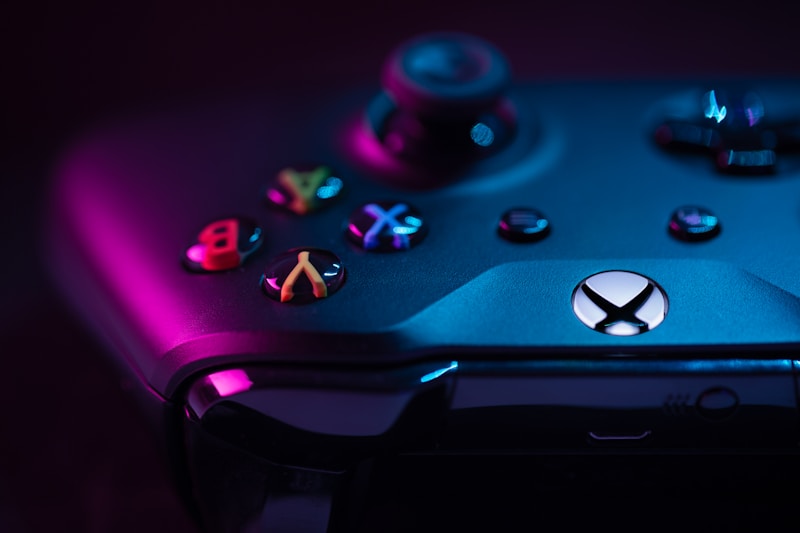In the most comprehensive breach of GameFreak’s internal planning to date, hackers released the studio’s complete development roadmap extending through 2030, exposing every major Pokémon project currently in planning stages. The leaked timeline reveals five major releases over the next five years: Pokémon Wind and Waves (Gen 10) in 2026 with DLC in 2027, Pokémon Legends: Galar (codename Ringo) in 2027-2028, an ambitious multi-region MMO called Project Seed in 2028-2029, and Generation 11 targeting 2030. Perhaps most shocking, the leaked budgets show Pokémon Legends: Z-A cost just $13 million to develop, raising serious concerns about investment levels for one of gaming’s most profitable franchises.
The Complete 2026-2030 Timeline
| Year | Project | Details |
|---|---|---|
| 2025-2026 | Pokémon Legends: Z-A DLC | Mega Dimension expansion adding 16 new Mega Evolutions |
| 2026 | Pokémon Wind/Waves (Gen 10) | Indonesia/Southeast Asia setting, Infinity theme, weather-based Tenko-Waza mechanic |
| 2027 | Pokémon Wind/Waves DLC | Post-launch content expansion for Gen 10 |
| 2027-2028 | Pokémon Legends: Galar (Ringo) | Set 1,000 years ago, creating first Gigantamax Poké Ball |
| 2028-2029 | Project Seed | Multi-region MMO featuring Kanto, Johto, Hoenn, Sinnoh, potentially Kitakami |
| 2030 | Generation 11 | New region and generation, currently in early R&D prototyping |

Project Seed: The Multi-Region MMO Revolution
The most revolutionary project on the leaked roadmap, codenamed Project Seed, represents GameFreak’s attempt to create a true Pokémon MMO incorporating multiple classic regions. According to leaked planning documents, Seed will allow players to freely travel between Kanto, Johto, Hoenn, and Sinnoh – all four Japanese-inspired regions from Generations 1-4. Some reports also mention Kitakami from Scarlet/Violet’s DLC, though that remains less certain.
The leaked prototype screenshots show MMO-style lobby areas where players can see and interact with each other in real-time. Quest boards provide mission objectives similar to traditional MMO design, while the game reportedly features raid boss encounters requiring cooperative multiplayer coordination. The ability to seamlessly transition between regions that were previously locked to specific games represents a massive technical undertaking that could fundamentally change how fans experience the Pokémon world.
Early builds suggest underwater exploration mechanics and procedurally generated island content, potentially tying into Generation 10’s Indonesia inspiration and setting. The MMO elements appear designed to create persistent online worlds rather than isolated single-player adventures, moving Pokémon toward live-service models that generate ongoing revenue beyond initial sales. Whether fans embrace this shift toward MMO design or reject it as diluting traditional Pokémon gameplay remains the critical question GameFreak must answer during development.
The Shocking Budget Revelations
Beyond the project timeline, the leaked financial documents delivered perhaps the most damning revelations about GameFreak’s development philosophy. Pokémon Legends: Z-A reportedly cost just 2 billion yen (approximately $13 million USD) to develop, an astonishingly low budget for a flagship title in gaming’s most profitable franchise. For context, many AAA games cost $100-200 million, with some exceeding $300 million when including marketing.
Japanese game development typically operates on smaller budgets than Western studios due to lower salaries and different production philosophies, but $13 million still represents a fraction of what comparable projects receive. The recent Pokémon games on Switch have suffered persistent performance issues, frame drops, texture pop-in, and technical problems that suggest insufficient resources allocated to optimization and polish. These budget figures provide concrete evidence explaining why GameFreak struggles to deliver technically competent products despite the franchise generating billions in revenue annually.
Community Outrage Over Investment Levels
The budget revelations sparked immediate backlash from fans who already felt frustrated by recent Pokémon games’ technical shortcomings. Reddit threads discussing the leaks featured comments like “the whole leak is just a Post-It note that says ‘even lower budget for next game'” and “A lot of people are going to complain about the money budget and not enough people will complain about the time budget of these games.” The sentiment reflects years of accumulated disappointment as players watched the world’s highest-grossing media franchise cut corners on development while charging premium prices.
One particularly insightful comment noted “The only leak I would care about is that they suddenly get a better engine, and actually treat Pokemon as a modern game with a high budget.” This captures the fundamental tension – fans recognize Pokémon’s potential but feel The Pokémon Company prioritizes profit margins over quality investment. When Scarlet and Violet launched in worse technical condition than Arceus despite being newer releases, it confirmed suspicions that GameFreak views adequate performance as optional rather than essential.
Generation 11 Already in Development
Among the leaked materials, internal slides from GameFreak’s Game Development Preparatory Office reveal that Generation 11 prototyping has already begun despite Gen 10 not launching until 2026. The documents explicitly state: “We are currently developing Gaia (Gen 10), but alongside that, we’re also moving forward with early prototyping for Gen 11, the next numbered title planned for release in 2030. A mixed team from the R&D Department and the Concept & Visual Studio will be formed and officially launched this fiscal year.”
This confirms GameFreak operates multiple concurrent development pipelines, with early R&D teams exploring Gen 11 concepts while separate teams finalize Gen 10. The overlapping timelines ensure continuous project flow, preventing gaps where talented developers sit idle between major releases. However, the compressed schedules also raise concerns about whether adequate development time exists for each title, or if GameFreak prioritizes release cadence over quality refinement.
Pokopia DLC and Smaller Projects
The roadmap also mentions DLC for Pokopia, though this project hasn’t been officially announced and details remain scarce from leaked materials. Speculation suggests Pokopia might be an internal codename for another game, possibly related to smaller spin-off titles or mobile projects that complement mainline releases. GameFreak historically operates separate teams for different project scales, allowing experimentation with alternative gameplay styles beyond traditional RPG formulas.
Additionally, a project called Pokémon Champions was originally scheduled for 2025 release according to leaked timelines, though no recent information suggests this remained in development. The project may have been canceled, postponed, or folded into other initiatives as priorities shifted. Internal development roadmaps frequently feature projects that never reach completion when business conditions change or creative directions prove unviable.
The Time Budget Problem
While financial budgets generate headlines, several commentators correctly identified time budgets as equally problematic. GameFreak operates under relentless pressure to maintain annual Pokémon releases supporting The Pokémon Company’s massive multimedia empire spanning anime, manga, toys, trading cards, and merchandise. This ecosystem requires new Pokémon, regions, and designs on strict schedules regardless of whether games achieve technical polish.
The leaked roadmap shows major releases spaced 1-2 years apart: Z-A in 2025, Gen 10 in 2026, Legends Galar in 2027-2028, Project Seed in 2028-2029, and Gen 11 in 2030. These compressed timelines barely allow for proper development cycles that include conceptualization, prototyping, production, testing, and refinement. Compare this to studios like Rockstar spending 5-8 years on single titles, or Nintendo’s internal teams delaying games repeatedly until meeting quality standards. GameFreak simply doesn’t enjoy that luxury when The Pokémon Company demands consistent content cadence.
Switch 2 Optimization Questions
The roadmap’s timing coincides perfectly with Nintendo Switch 2’s lifecycle. Generation 10 targeting 2026 likely means Wind and Waves become Switch 2 exclusives similar to speculation around other projects. This hardware transition offers GameFreak a clean slate for building better engines and workflows optimized for modern hardware without backward compatibility constraints holding back ambition.
However, if budgets remain at $13-20 million levels, simply having better hardware won’t solve optimization problems. GameFreak needs to invest in experienced technical engineers, advanced development tools, longer QA testing periods, and willingness to delay releases when performance doesn’t meet standards. The Switch 2 provides an opportunity for transformation, but only if The Pokémon Company commits resources matching the franchise’s commercial success rather than continuing minimum viable product philosophies.
Legal and Ethical Implications
Beyond the content revelations, these leaks raise serious questions about cybersecurity, employee safety, and legal accountability. GameFreak confirmed the August 2024 breach exposed personal information for over 2,500 employees including full names and contact details, potentially putting them at risk. Nintendo’s April 2025 Discord subpoena apparently failed to identify perpetrators, who now demonstrate continued access to GameFreak’s most sensitive planning materials.
The timing of releasing Z-A’s source code and roadmap data just days before launch represents malicious intent to maximize commercial damage and spoil carefully orchestrated marketing campaigns. While fans consume leaked information eagerly, the underlying criminal activity threatens livelihoods and violates privacy in ways that should concern everyone regardless of curiosity about future games. The hacker’s strategic information release demonstrates this isn’t simple whistleblowing but calculated harassment designed to undermine GameFreak’s business operations.
Frequently Asked Questions
What Pokémon games are releasing through 2030?
According to leaked roadmaps: Pokémon Wind/Waves (Gen 10) in 2026, Legends: Galar in 2027-2028, Project Seed multi-region MMO in 2028-2029, and Generation 11 in 2030, with various DLC expansions interspersed.
What is Project Seed?
Project Seed is an ambitious multi-region MMO allowing players to freely travel between Kanto, Johto, Hoenn, Sinnoh, and potentially Kitakami. Features include MMO lobbies, quest boards, raid bosses, and procedurally generated content targeting 2028-2029 release.
How much did Pokémon Legends: Z-A cost to develop?
Leaked financial documents show Z-A’s development budget was approximately 2 billion yen ($13 million USD), shockingly low for a flagship franchise title and potentially explaining persistent technical issues in recent Pokémon games.
Is Generation 11 already in development?
Yes, leaked internal documents confirm GameFreak has begun early R&D prototyping for Gen 11 targeting 2030 release, running concurrent with Gen 10’s finalization through mixed teams from R&D and Concept departments.
Will Pokémon Legends: Galar happen?
Leaked roadmaps show Legends: Galar (codename Ringo) planned for 2027-2028, set 1,000 years in Galar’s past where players create the first Gigantamax Poké Ball, though early planning documents don’t guarantee final execution.
Are there any Unova games coming?
No, the leaked roadmap contains zero Unova-related projects through 2030, disappointing fans hoping for Black/White remakes or Legends Unova. GameFreak’s timeline apparently prioritizes other regions during this planning window.
How accurate are these leaked roadmaps?
Documents allegedly date from 2020-2024 planning stages. Game concepts frequently change during development, so while the roadmap provides GameFreak’s current thinking, timelines, budgets, and project details may shift significantly before official announcements.
The Road Ahead
GameFreak’s leaked 2030 roadmap reveals an ambitious slate of projects attempting to evolve Pokémon beyond traditional RPG formulas toward MMO experiences, multi-region adventures, and live-service models. The timeline demonstrates careful planning extending years into the future with overlapping development pipelines ensuring consistent releases supporting The Pokémon Company’s multimedia empire. However, the shockingly low budgets exposed alongside these grand ambitions raise legitimate concerns whether GameFreak receives adequate resources to realize its vision with technical competence matching creative concepts. Until The Pokémon Company demonstrates willingness to invest profits back into development quality rather than maximizing margins on minimum viable products, fans will continue questioning whether the world’s most profitable franchise truly prioritizes delivering experiences worthy of its legacy.

